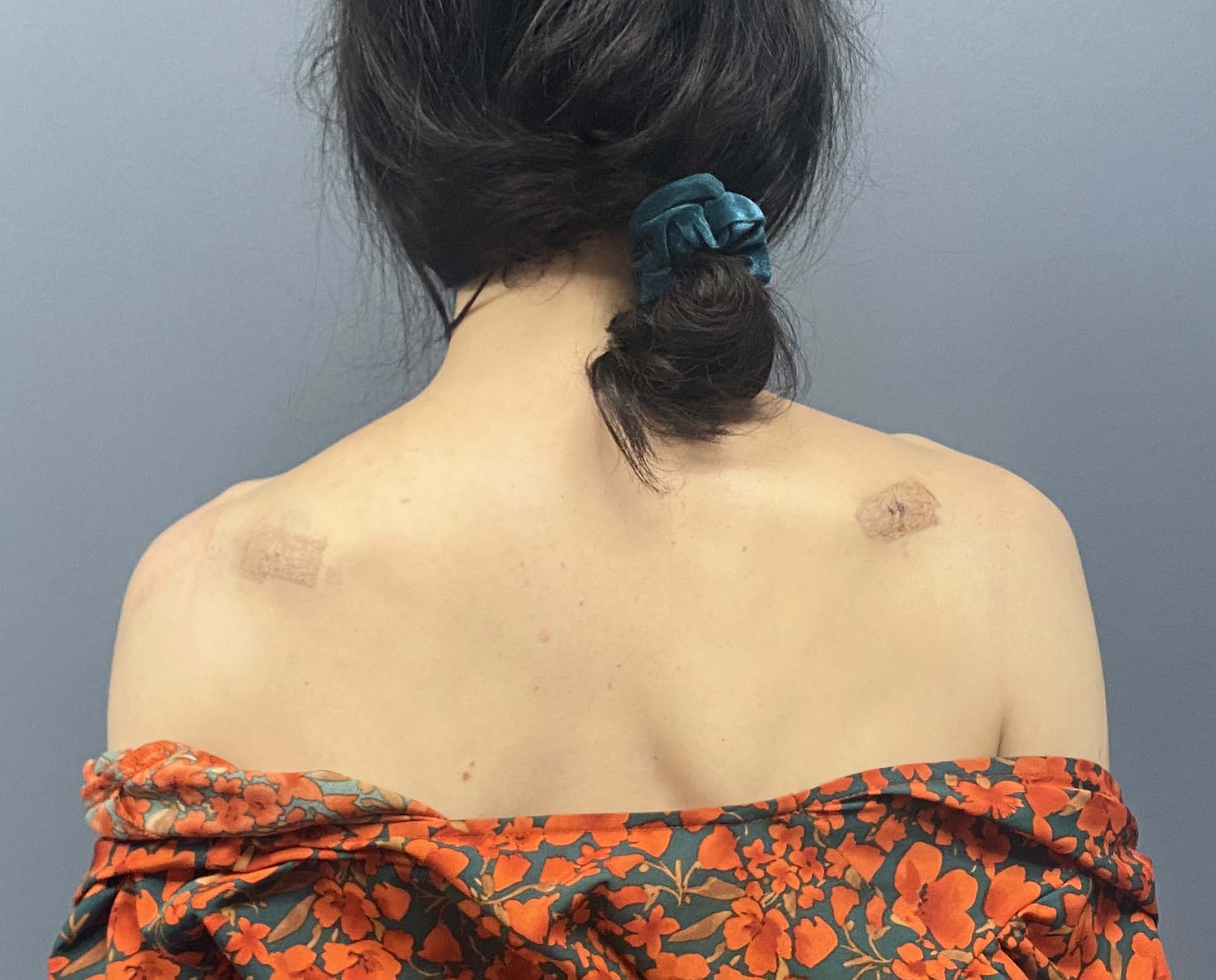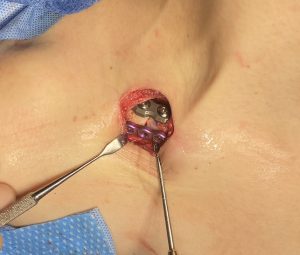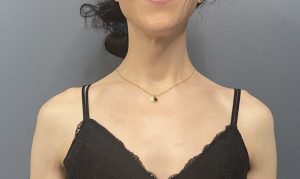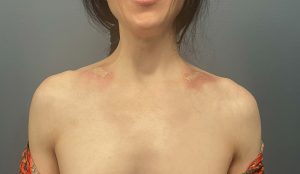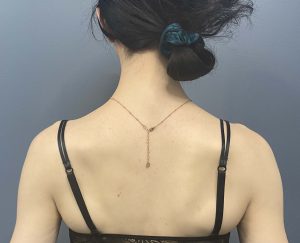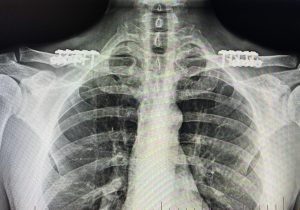Background: Wide shoulders can create an aesthetic dysphoria for females and can interfere with the fit and look of certain types of clothing. The clavicle reduction osteotomy has been shown to be an effective procedure at reshaping the shoulders to a more pleasing width and shape. This is seen very obviously in the frontal view where there are few distractions to viewing the shoulders. The shoulder width reduction can equally been seen from the back view but the large paired shoulder blades are very visible and do not change in shape as the outer shoulder width is reduced.
The shoulder blades or scapulas are the flat triangular-shaped bones which serve as a fibromuscular connection between the clavicles and the upper arm. (humerus) The larger trapezius and deltoid muscles cover most of its external surface and attach at a ridge of bone that traverses the width of the bone. (spine) It is a visible projection that is distinctly different than its medial, lateral and inferior (tip) borders. As the spine crosses the scapular width its projection is not even and certain areas project higher than others. The most prominent is the deltoid tubercle, a lip of bone which serves as the medial point of attachment of the deltoid muscle and the tendon of the middle portion of the trapezius muscle. This bony prominence may be aesthetically undesired and it can be reduced at the same time as shoulder narrowing surgery.
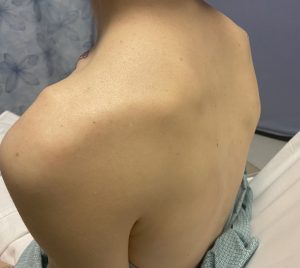

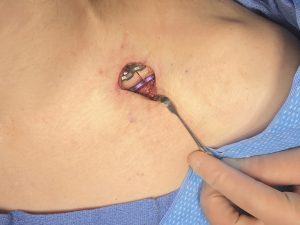
When seen the next day the reduction in the shape of her shoulders could be seen in both the front and back views.

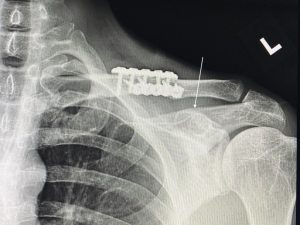
Because of the shoulder rotation from shortening the clavicles the angle of the scapula can change making any prominence of the spine more apparent. If such a spine prominence was concerning before shoulder narrowing surgery it will become more so afterwards. Shaving of the spine prominence can be done at the same time as the clavicle reduction osteotomies and does not lengthen or make the recovery more difficult. The most significant aspect of scapular shaves is intraoperative positioning where the shaves are done initially in the prone position and the reduction osteotomies back over in the supine position.
Key Points:
1) Broader shoulders can be associated with prominences of the scapular spine.
2) Scapular shaves can be combined with clavicle reduction osteotomies for a total shoulder reshaping effort.
3) Scapular shaves do not extend the recovery period from narrowing the shoulders.
Dr. Barry Eppley
World-Renowned Plastic Surgeon

